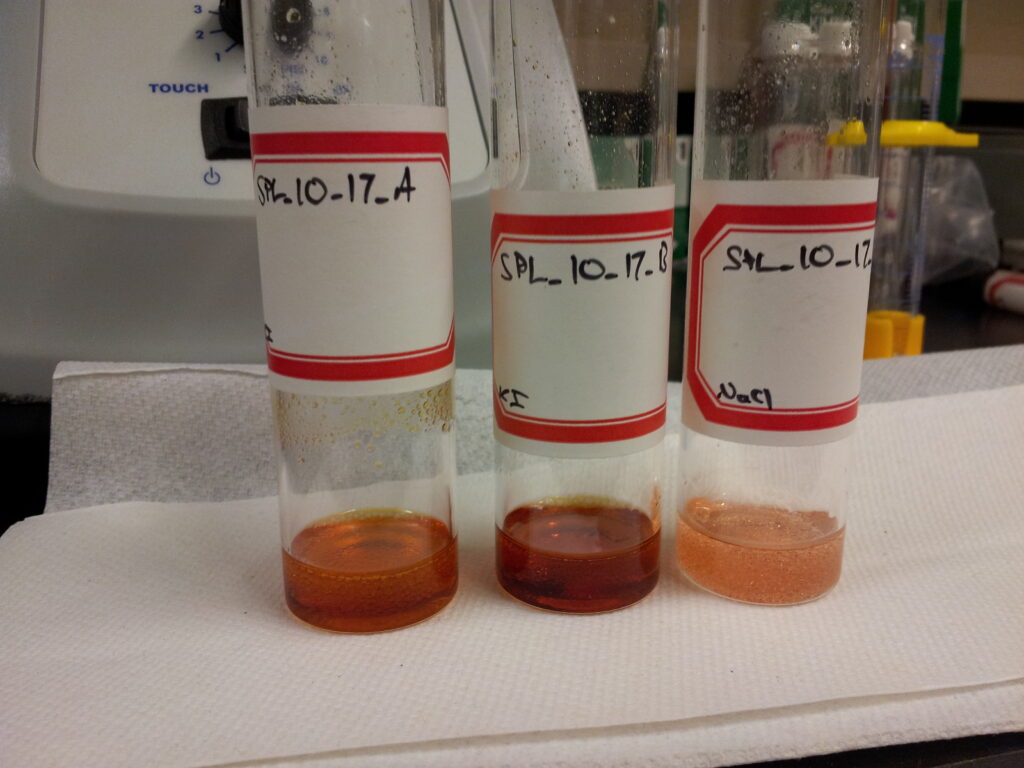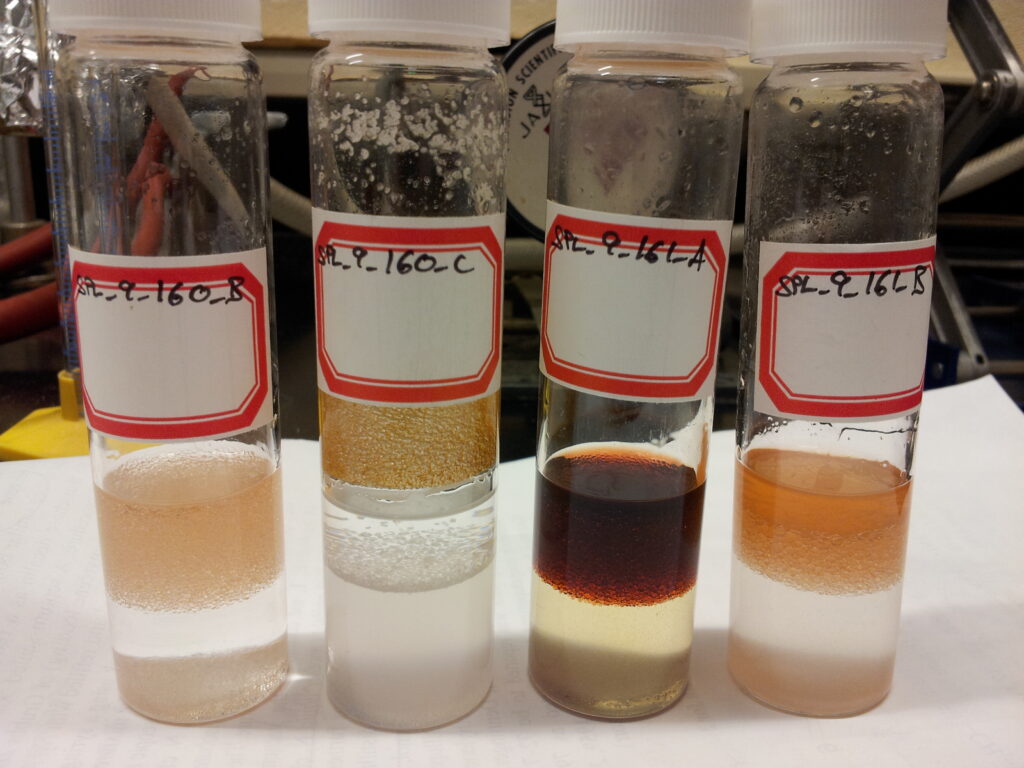A little over five years ago, Dr. S.P. Lewis undertook a series of projects aimed at the green production of polymers by the cationic polymerization of olefins. Lewis reduced to practice greater than twenty different polymerization systems, including four that operate in aqueous media. The total number of aqueous cationic polymerization systems invented by Dr. Lewis are six in total (thus far).1 One such invention is briefly discussed below. This system is unique compared to other aqueous polymerizations invented by Lewis in that it appears to have the potential to operate in a living manner.2
Elemental iodine was discovered to have the ability to induce the polymerization of olefins in water. The two main olefins explored thus far (Table 1) are p-methoxystyrene (PMOS) and N-vinylcarbazole (NVC). Indications are that other olefins (e.g., vinyl ethers) may be susceptible to polymerization under similar conditions. The addition of salts to the aqueous phase appears to prolong polymerization. Such salts can be a source of common ions (e.g., KI, [Bu4N]+I–) if desired. Polymerizations conducted in the presence of iodide salts maintain a purple/red color whereas those carried out in the present of chloride have more of an orange-yellow coloration (Figure 1). Color is also dependent on the identity of the solvent (Figure 2). The exact mechanism of these polymerizations has not been deduced; however, one that entails a cationic intermediate seems plausible given the increase in yield and molecular weight (MW) as the solvent polarity is raised. Likewise, experiments show the standard inverse relationship between reaction T and MW.


Ring opening polymerization of heterocyclic monomers may also be feasible with similar initiator systems. A cursory experiment using styrene oxide seemed to indicate that epoxides might be susceptible to polymerization under these conditions and there is a possibility that other heterocycles (e.g., cyclic siloxanes, aziridines, oxazolines) could show activity. A partial list of such monomers is covered by Kubisa.3
Other possible initiators include HI and carbocation synthons whereas there is the potential for use of zinc and tin halides as coinitiators. Many techniques as devised by the Higashimura group for living polymerization under anhydrous conditions (and others) should be explored in aqueous media.3 Thus, living aqueous cationic polymerization might be feasible using HI + I2 as an initiator system.
More information on these polymerization systems will be disclosed in the future on this website and at www.pyramidpolymers.com.
Footnotes
Footnote 1. The mechanism of one of these systems has not been definitively proven to be cationic.
Footnote 2. Only preliminary experimentation has been conducted on this system and at this moment it cannot be said for certainty that the system can be made living.
Footnote 3. Cationic Polymerizations; Matyjaszewski, K., Ed.; Marcel Dekker, Inc.: New York,1996; pp 1-768.
